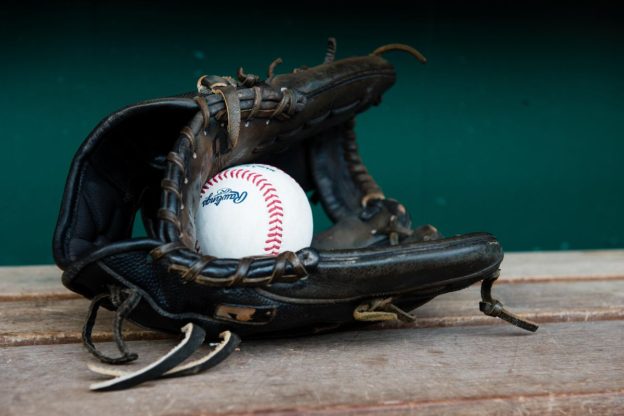As we move into the second month of the baseball season, we begin Phase 2 of the in-season baseball workouts. Each athlete really needs to evaluate his particular needs. Are his strength levels staying consistent? Is he picking up nagging bumps, bruises, or injuries? Is he better suited to limit his strength training volume and focus on his recovery methods, or can he still work in a strength exercise or two? Whatever is designed must be easily adaptable to the athlete’s changing needs as the season wears on.
Overall Goals for In-Season Training – Maintain strength, speed, and power from off-season and pre-season workouts; maintain flexibility; maximize recovery between practices and games
Pre-Training
Soft Tissue Work
- Glutes
- IT Band
- Quads
- Groin
Pre-hab
Complete one set of each exercise back-to-back until one set of each movement is complete. Then, return to the start and complete any movements with additional sets. Minimal rest between exercises.
- Glute Bridge – 2 x 12 reps
- Scapular Punch with Band – 2 x 8
- Quadruped Reach Through – 2 x 6 each
Dynamic Warm-up
Complete one set of each exercise back-to-back until one set of each movement is complete.
- Reverse Lunge with Twist – 10 yards
- Quad Stretch with Toe Touch – 10 yards
- World’s Greatest with Rotation – 10 yards
- Inch Worm – 10 yards
- Walking Leg Cradle – 10 yards
Exercises/Movements
Complete the following movements in order. Exercises grouped together should be completed in a superset fashion – back-to-back with minimal rest, taking a longer rest after the second exercise is complete. Rest 30-60 seconds between sets.
- Squat Jump, continuous – 3 x 5 (stick and hold final landing)
- MB Slam – 2 x 10
- Deadlift
- For athletes with DB’s – 3 x 8
- For athletes with barbell or trap bar – 3 x 5
- MB Push-up – 2 x 10
- DB Reverse Lunge – 3 x 6 each
- Standing Band Row – 2 x 8
- 1-leg DB RDL – 2 x 8 each
- Prone W – 2 x 10
- Reverse Hyper – 2 x 10
Post-Training
Soft Tissue Work
- Hip Flexor
- IT Band
- Mid/Upper Back
Stretching
- Hamstrings
- Groin
- Piriformis Stretch
- Sleeper Stretch
*Need a substitution for an exercise? Feel free to reach out here to let me know how I can help.

